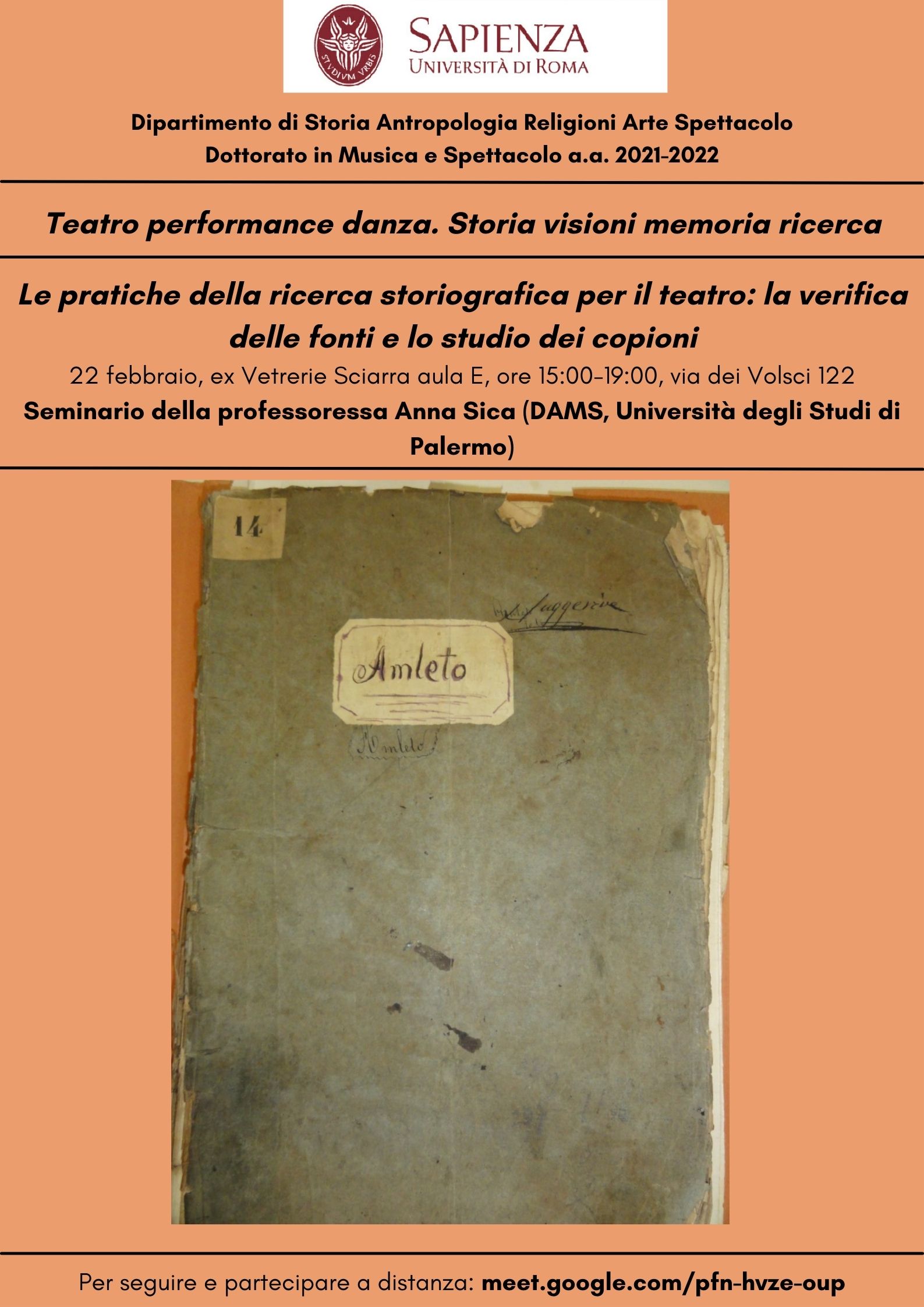
"Theatre performance dance. History sight memory research"
22/02/2022
The historiography for theatre research presents methodological peculiarities that cannot be generated other than by the same "stuff" it is fed on. We are sure that it does not feed on theories but rather theories take shape only after the consolidation of facts and contexts verified and proven by the different phases of the theatre research. Therefore, in our research field, it becomes essential to identify the "stuff" of which our investigation is made on; if it concerns the Italian leading actors/actresses’ tradition, it is necessary to individualize the gamete of that specific drama, that was acting and declamation. Its main practice was to chain the modulations of the key-voice to the key-gesture. In so doing, circumstances and feelings were interpreted by actors and actresses to make a deep effort with spectactors.
The declamation of the Italian leading tors/actresses is still housed in the prompt-books which they marked according to a code of symbols, that was named by the actors themselves as the Italian method of la drammatica. The declamatory method existed thanks to a rich interactive scheme of key-voices and key-gestures, which the leading actor applied in his prompt-book to be able to direct his actors in giving strength to the interpretation of his own main role and of the entire tragedy or comedy.
For example, Hamlet’s prompt-book marked by Tommaso Salvini, staged at the Florentines theatre, in Naples, in 1860, contains the patriotic inspiration of Salvini’s interpretation, as well as the prompt-book of Gallarati Scotti’s So Be it (1922) marked by Eleonora Duse reveals the nature of the actress's cultural and literary commitment, and claims her artistic identity, no longer between art and life, or in life with art, nor in art with life, but as history of a thought, history of a time told on a stage and annotated in a prompt-book.
meet.google.com/pfn-hvze-oup